word2vector训练数据集整理(代码实现)
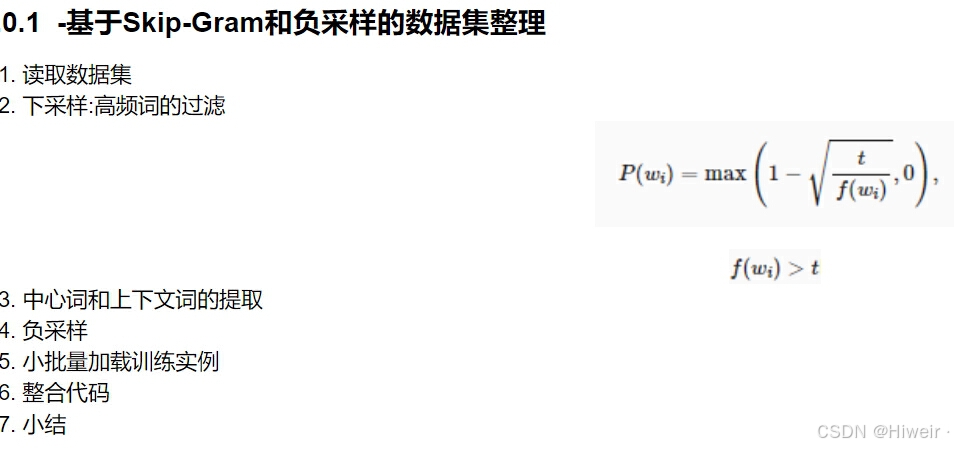
import math
import os
import random
import torch
import dltools
from matplotlib import pyplot as plt#读取数据集
def read_ptb():"""将PTB数据集加载到文本行的列表中"""with open('./ptb/ptb.train.txt') as f:raw_text = f.read()return [line.split() for line in raw_text.split('\n')]sentences = read_ptb()
print(f'# sentences数:{len(sentences)}')# sentences数:42069
#构建词表,并把频次低于10的词元替换为<unk>
vocab = dltools.Vocab(sentences, min_freq=10)
print(f'# vocab_size: {len(vocab)}')#向下采样
def subsample(sentences, vocab):#排除未知词元‘<unk>’,对sentences进行处理sentences = [[token for token in line if vocab[token] != vocab.unk] for line in sentences]#对排除unk的sentences进行tokens计数 (未去重)counter = dltools.count_corpus(sentences)#聚合num_tokens = sum(counter.values())#若在下采样期间保留词元, 则返回True def keep(token):return (random.uniform(0, 1) < math.sqrt(1e-4 / (counter[token] / num_tokens)))#降低冠词等无意义词的频次, 词频低越容易保留return ([[token for token in line if keep(token)] for line in sentences], counter) subsampled, counter = subsample(sentences, vocab)#画出下采样之后的图, 采取下采样前后的20条数据
before = [len(x) for x in sentences[:20]]
after = [len(x) for x in subsampled[:20]]
x = range(len(before))
plt.bar(x, height=before, width=0.4, alpha=0.8, color='red', label='before')
#[i + 0.4 for i in x] 是X轴刻度
plt.bar([i + 0.4 for i in x], height=after, width=0.4, color='green', label='after')
plt.xlabel('tokens per sentences')
plt.ylabel('count')
plt.legend(['before', 'after'])
plt.show()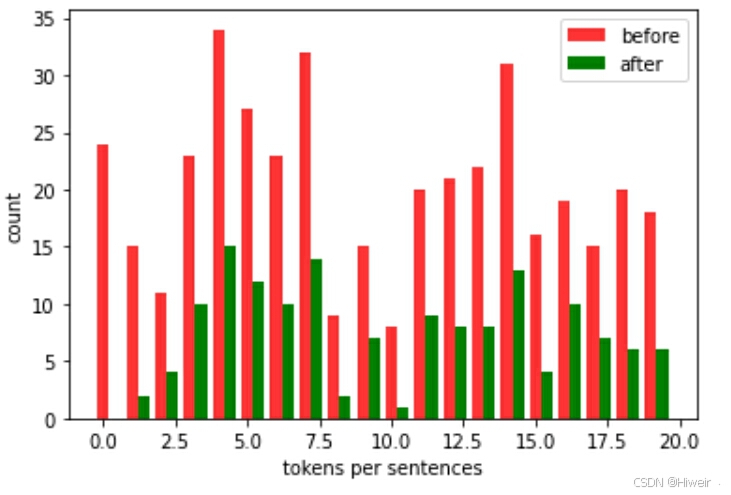
def compare_counts(token):return (f'"{token}"的数量:' f'之前={sum([l.count(token) for l in sentences])}, ' f'之后={sum([l.count(token) for l in subsampled])}')compare_counts('the')'"the"的数量:之前=50770, 之后=2000'
compare_counts('publishing')'"publishing"的数量:之前=64, 之后=64'
#将词元映射到他们在语料库中的索引
corpus = [vocab[line] for line in subsampled]
corpus[:3][[], [71, 2115], [5277, 3054, 1580, 95]]
#中心词和上下文词的提取
def get_centers_and_contetxs(corpus, max_window_size):"""返回skip_gram模型中的中心词和上下文词"""centers, contexts = [], []for line in corpus:#要形成“中心词——上下文词对”, 每个句子至少需要有2个词if len(line) < 2:continuecenters += line #把满足条件的line放于中心词列表中for idx, i in enumerate(range(len(line))): #上下文窗口的中间token的索引为iwindow_size = random.randint(1, max_window_size)print('中心词 {} 的窗口大小:{}'.format(idx, window_size))indices = list(range(max(0, i - window_size), min(len(line), i + window_size + 1)))#从上下文词中排除中心词indices.remove(i)contexts.append([line[x] for x in indices])return centers, contexts#假设数据
tiny_dataset = [list(range(7)), list(range(7,10))]
print('数据集', tiny_dataset)
#表示解压函数,用于将打包的元组解压回原来的序列
for center, context in zip(*get_centers_and_contetxs(tiny_dataset, 2)):print('中心词:',center, '的上下文词是:', context)数据集 [[0, 1, 2, 3, 4, 5, 6], [7, 8, 9]] 中心词 0 的窗口大小:1 中心词 1 的窗口大小:2 中心词 2 的窗口大小:2 中心词 3 的窗口大小:1 中心词 4 的窗口大小:2 中心词 5 的窗口大小:2 中心词 6 的窗口大小:2 中心词 0 的窗口大小:2 中心词 1 的窗口大小:1 中心词 2 的窗口大小:1 中心词 0 的上下文词是 [1] 中心词 1 的上下文词是 [0, 2, 3] 中心词 2 的上下文词是 [0, 1, 3, 4] 中心词 3 的上下文词是 [2, 4] 中心词 4 的上下文词是 [2, 3, 5, 6] 中心词 5 的上下文词是 [3, 4, 6] 中心词 6 的上下文词是 [4, 5] 中心词 7 的上下文词是 [8, 9] 中心词 8 的上下文词是 [7, 9] 中心词 9 的上下文词是 [8]
#在PTB上进行中心词和背景词提取
#max_window_size=5 业界常用到的数值,效果比较好
all_centers, all_contexts = get_centers_and_contetxs(corpus, 5)
'“中心词-上下文词对”的数量:{}'.format( sum([len(contexts) for contexts in all_contexts]))'“中心词-上下文词对”的数量:1499666'
#负采样_按权重抽取
class RandomGenerator:"""根据n个采样权重在{1,2,,3,...n}中随机抽取"""def __init__(self, sampling_weights):#Exclude 排除self.population = list(range(1, len(sampling_weights) + 1)) #对采样数据的编号self.sampling_weights = sampling_weightsself.candidates = [] #采样结果self.i = 0def draw(self):if self.i == len(self.candidates):#缓存k个随机采样的结果 # population:集群。 weights:相对权重。 cum_weights:累加权重。 k:选取次数self.candidates = random.choices(self.population, self.sampling_weights, k=10000) #k最大值=10000(采样数量)self.i = 0self.i += 1return self.candidates[self.i - 1]#假设数据验证
generator = RandomGenerator([2, 3, 4])
[generator.draw() for _ in range(10)][2, 1, 1, 2, 1, 1, 3, 2, 3, 2]
#返回负采样中的噪声词
def get_negatives(all_contetxs, vocab, counter, K):#索引为1,2,....(索引0是此表中排除的未知标记)sampling_weights = [counter[vocab.to_tokens(i)]**0.75 for i in range(1, len(vocab))]all_negatives, generator = [], RandomGenerator(sampling_weights)for contexts in all_contetxs: #遍历背景词negatives = []while len(negatives) < len(contexts) * K:neg = generator.draw()#噪声词不能是上下文词if neg not in contexts:negatives.append(neg)all_negatives.append(negatives)return all_negativesall_negatives = get_negatives(all_contexts, vocab, counter, 5)# 小批量操作
def batchify(data):"""返回带有负采样的跳元模型的小批量样本"""max_len = max(len(c) + len(n) for _, c, n in data)centers, contexts_negatives, masks, labels = [], [], [], []for center, context, negative in data:cur_len = len(context) + len(negative)centers += [center]contexts_negatives += \[context + negative + [0] * (max_len - cur_len)]masks += [[1] * cur_len + [0] * (max_len - cur_len)]labels += [[1] * len(context) + [0] * (max_len - len(context))]return (torch.tensor(centers).reshape((-1, 1)), torch.tensor(contexts_negatives), torch.tensor(masks), torch.tensor(labels))#小批量的例子
x_1 = (1, [2, 2], [3, 3, 3, 3])
x_2 = (1, [2, 2, 2], [3, 3])
batch = batchify((x_1, x_2))names = ['centers', 'contexts_negative', 'masks', 'labels']
for name, data in zip(names, batch):print(name, '=', data)centers = tensor([[1],[1]]) contexts_negative = tensor([[2, 2, 3, 3, 3, 3],[2, 2, 2, 3, 3, 0]]) masks = tensor([[1, 1, 1, 1, 1, 1],[1, 1, 1, 1, 1, 0]]) labels = tensor([[1, 1, 0, 0, 0, 0],[1, 1, 1, 0, 0, 0]])
#整合后的数据加载处理模块
def load_data_ptb(batch_size, max_window_size, num_noise_words):"""下载PTB数据集, 然后将其加载到内存中"""#加载PTB数据集sentences = read_ptb()#获取词汇表vocab = dltools.Vocab(sentences, min_freq=10)#下采样subsampled, counter = subsample(sentences, vocab)#语料库corpus = [vocab[line] for line in subsampled]#获取中心词与背景词all_centers, all_contexts = get_centers_and_contetxs(corpus, max_window_size)#获取噪声词get_negatives(all_contetxs, vocab, counter, num_noise_words)class PTBDataset(torch.utils.data.Dataset):def __init__(self, centers, contexts, negatives):assert len(centers) == len(contexts) == len(negatives)self.centers = centersself.contexts = contextsself.negatives = negativesdef __getitem__(self, index):return (self.centers[index], self.contexts[index],self.negatives[index])def __len__(self):return len(self.centers)dataset = PTBDataset(all_centers, all_contexts, all_negatives)data_iter = torch.utils.data.DataLoader(dataset, batch_size, shuffle=True, collate_fn = batchify)return data_iter, vocabdata_iter, vocab = load_data_ptb(5, 5, 5)
for batch in data_iter:for name, data in zip(names, batch):print(name, 'shape:', data.shape)breakcenters shape: torch.Size([5, 1]) contexts_negatives shape: torch.Size([5, 48]) masks shape: torch.Size([5, 48]) labels shape: torch.Size([5, 48])
batch(tensor([[1259],[ 627],[5679],[ 3],[ 960]]),tensor([[1983, 1136, 1186, 15, 3216, 5351, 512, 321, 2208, 1396, 60, 782,63, 929, 149, 105, 305, 7, 74, 11, 1530, 1, 5893, 2668,0, 0, 0, 0, 0, 0, 0, 0, 0, 0, 0, 0,0, 0, 0, 0, 0, 0, 0, 0, 0, 0, 0, 0],[ 298, 1960, 1098, 1288, 6, 1689, 4808, 981, 2040, 3887, 385, 59,2167, 4424, 91, 4159, 65, 1271, 3621, 6020, 585, 1426, 5097, 335,18, 770, 5317, 1408, 5828, 3321, 836, 529, 1772, 365, 6718, 269,101, 209, 1450, 1, 47, 834, 8, 2, 979, 28, 4029, 471],[6034, 2, 4028, 829, 1042, 5340, 0, 0, 0, 0, 0, 0,0, 0, 0, 0, 0, 0, 0, 0, 0, 0, 0, 0,0, 0, 0, 0, 0, 0, 0, 0, 0, 0, 0, 0,0, 0, 0, 0, 0, 0, 0, 0, 0, 0, 0, 0],[ 678, 582, 5033, 4220, 959, 280, 124, 397, 211, 787, 2795, 383,18, 16, 1293, 1212, 2149, 2627, 623, 8, 4467, 155, 3932, 1447,5595, 27, 15, 81, 283, 2631, 410, 938, 4, 344, 5204, 233,149, 2, 4933, 5675, 62, 182, 18, 1186, 227, 2429, 2349, 31],[ 128, 1332, 3790, 1370, 950, 119, 1369, 1328, 1007, 2831, 782, 374,723, 13, 14, 76, 618, 1, 821, 143, 2317, 5730, 978, 753,839, 2055, 160, 12, 377, 4, 0, 0, 0, 0, 0, 0,0, 0, 0, 0, 0, 0, 0, 0, 0, 0, 0, 0]]),tensor([[1, 1, 1, 1, 1, 1, 1, 1, 1, 1, 1, 1, 1, 1, 1, 1, 1, 1, 1, 1, 1, 1, 1, 1,0, 0, 0, 0, 0, 0, 0, 0, 0, 0, 0, 0, 0, 0, 0, 0, 0, 0, 0, 0, 0, 0, 0, 0],[1, 1, 1, 1, 1, 1, 1, 1, 1, 1, 1, 1, 1, 1, 1, 1, 1, 1, 1, 1, 1, 1, 1, 1,1, 1, 1, 1, 1, 1, 1, 1, 1, 1, 1, 1, 1, 1, 1, 1, 1, 1, 1, 1, 1, 1, 1, 1],[1, 1, 1, 1, 1, 1, 0, 0, 0, 0, 0, 0, 0, 0, 0, 0, 0, 0, 0, 0, 0, 0, 0, 0,0, 0, 0, 0, 0, 0, 0, 0, 0, 0, 0, 0, 0, 0, 0, 0, 0, 0, 0, 0, 0, 0, 0, 0],[1, 1, 1, 1, 1, 1, 1, 1, 1, 1, 1, 1, 1, 1, 1, 1, 1, 1, 1, 1, 1, 1, 1, 1,1, 1, 1, 1, 1, 1, 1, 1, 1, 1, 1, 1, 1, 1, 1, 1, 1, 1, 1, 1, 1, 1, 1, 1],[1, 1, 1, 1, 1, 1, 1, 1, 1, 1, 1, 1, 1, 1, 1, 1, 1, 1, 1, 1, 1, 1, 1, 1,1, 1, 1, 1, 1, 1, 0, 0, 0, 0, 0, 0, 0, 0, 0, 0, 0, 0, 0, 0, 0, 0, 0, 0]]),tensor([[1, 1, 1, 1, 0, 0, 0, 0, 0, 0, 0, 0, 0, 0, 0, 0, 0, 0, 0, 0, 0, 0, 0, 0,0, 0, 0, 0, 0, 0, 0, 0, 0, 0, 0, 0, 0, 0, 0, 0, 0, 0, 0, 0, 0, 0, 0, 0],[1, 1, 1, 1, 1, 1, 1, 1, 0, 0, 0, 0, 0, 0, 0, 0, 0, 0, 0, 0, 0, 0, 0, 0,0, 0, 0, 0, 0, 0, 0, 0, 0, 0, 0, 0, 0, 0, 0, 0, 0, 0, 0, 0, 0, 0, 0, 0],[1, 0, 0, 0, 0, 0, 0, 0, 0, 0, 0, 0, 0, 0, 0, 0, 0, 0, 0, 0, 0, 0, 0, 0,0, 0, 0, 0, 0, 0, 0, 0, 0, 0, 0, 0, 0, 0, 0, 0, 0, 0, 0, 0, 0, 0, 0, 0],[1, 1, 1, 1, 1, 1, 1, 1, 0, 0, 0, 0, 0, 0, 0, 0, 0, 0, 0, 0, 0, 0, 0, 0,0, 0, 0, 0, 0, 0, 0, 0, 0, 0, 0, 0, 0, 0, 0, 0, 0, 0, 0, 0, 0, 0, 0, 0],[1, 1, 1, 1, 1, 0, 0, 0, 0, 0, 0, 0, 0, 0, 0, 0, 0, 0, 0, 0, 0, 0, 0, 0,0, 0, 0, 0, 0, 0, 0, 0, 0, 0, 0, 0, 0, 0, 0, 0, 0, 0, 0, 0, 0, 0, 0, 0]]))
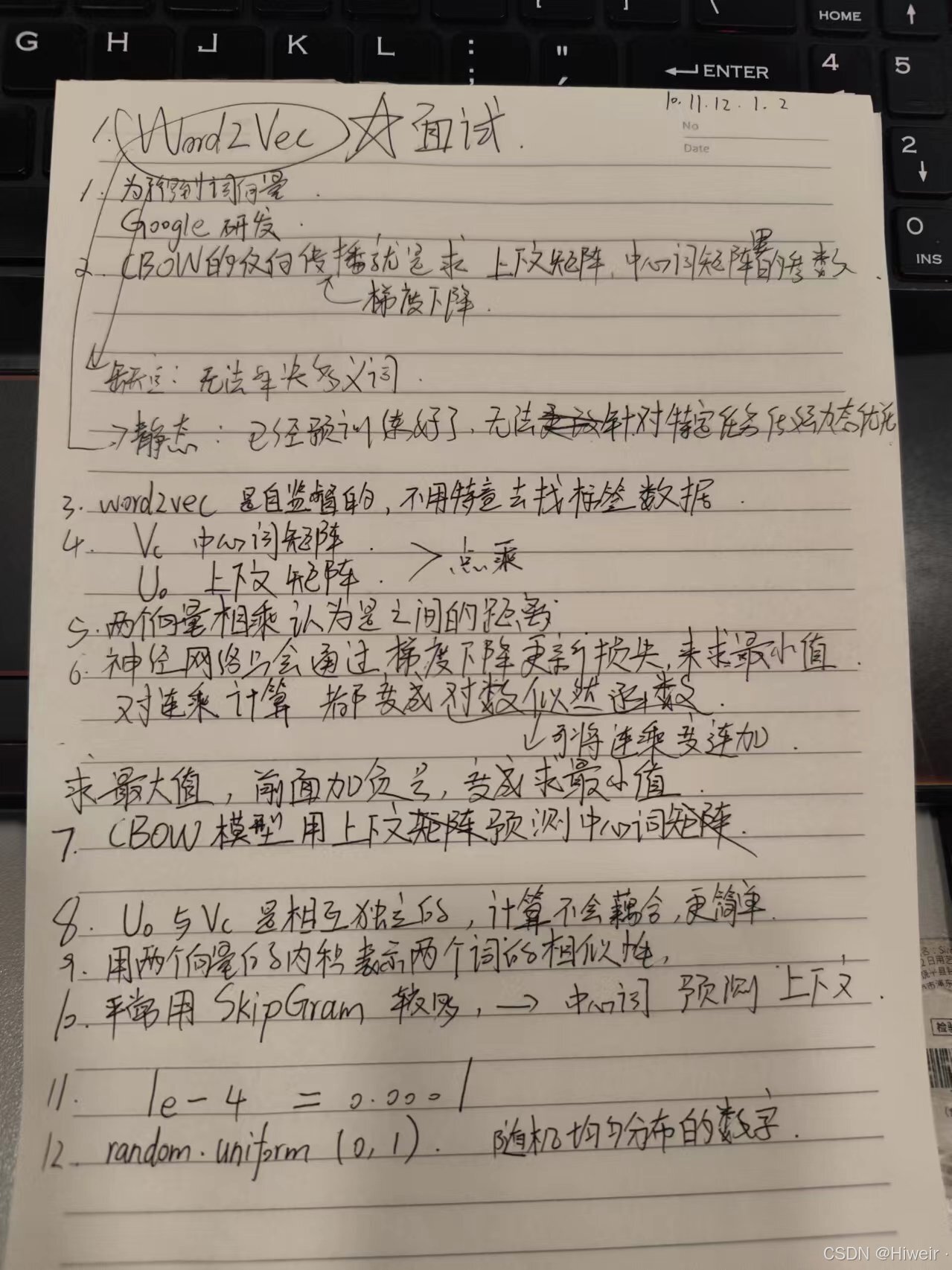
相关文章:

word2vector训练数据集整理(代码实现)
import math import os import random import torch import dltools from matplotlib import pyplot as plt #读取数据集 def read_ptb():"""将PTB数据集加载到文本行的列表中"""with open(./ptb/ptb.train.txt) as f:raw_text f.read()return…...

无心上班,只想为祖国庆生?让ChatGPT帮你搞定工作!
国庆假期临近,大家的心早已飞向诗和远方了吧。 然而,现实总是无情地将我们拉回到堆积如山的工作任务上:紧急报告的截止日期就在眼前,复杂的项目策划还未动笔,客户的定制需求迫在眉睫。每年的这个时候,如何…...

【Python】YOLO牛刀小试:快速实现视频物体检测
YOLO牛刀小试:快速实现视频物体检测 在深度学习的众多应用中,物体检测是一个热门且重要的领域。YOLO(You Only Look Once)系列模型以其快速和高效的特点,成为了物体检测的首选之一。本文将介绍如何使用YOLOv8模型进行…...

Vscode超好看的渐变主题插件
样式效果: 插件使用方法: 然后重启,之后会显示vccode损坏,不用理会,因为这个插件是更改了应用内部代码,直接不再显示即可。...

OceanBase技术解析:自适应分布式下压技术
在《OceanBase 数据库源码解析》这本书中,关于SQL执行器的深入剖析相对较少,因此,希望增添一些实用且详尽的补充内容。 上一篇博客《 OceanBase技术解析: 执行器中的自适应技术》中,已初步介绍了执行器中几项典型的自适…...

Firebase和JavaScript创建Postback Link逻辑
Firebase是一个提供后端即服务(BaaS)的平台,它允许开发者快速构建应用程序而无需管理服务器。Firebase不直接提供生成Postback Link的功能,但您可以使用Firebase的功能来构建和管理URL,然后在客户端使用这些URL来实现Postback。 以下是如何使用Firebase和JavaScript来创建…...

docker配置daemon.json文件
报错 :Get "https://registry-1.docker.io/v2/": net/http: request canceled while waiting for connection (Client.Timeout exceeded while awaiting headers) 解决方法 配置加速地址 vim /etc/docker/daemon.json添加以下内容 {"registry-mirro…...

【08】纯血鸿蒙HarmonyOS NEXT星河版开发0基础学习笔记-Scroll容器与Tabs组件
序言: 本文详细讲解了关于我们在页面上经常看到的可滚动页面和导航栏在鸿蒙开发中如何用Scroll和Tabs组件实现,介绍了Scroll和Tabs的基本用法与属性。 笔者也是跟着B站黑马的课程一步步学习,学习的过程中添加部分自己的想法整理为笔记分享出…...

苏州 数字化科技展厅展馆-「世岩科技」一站式服务商
数字化科技展厅展馆设计施工是一个综合性强、技术要求高的项目,涉及到众多方面的要点。以下是对数字化科技展厅展馆设计施工要点的详细分析: 一、明确目标与定位 在设计之初,必须明确展厅的目标和定位。这包括确定展厅的主题、目标受众、展…...

音频搜索公司 DeepGram,定位语音搜索AI大脑,DeepGram想做“音频版”
1. 亦仁分享 DeepGram 成立于 2015 年,位于美国山景城,是一家基于 AI 技术的音频搜索引擎公司。运用机器学习进行语音识别、搜寻重要时刻并对音频和视频进行分类,帮助用户快速索引和浏览音频和视频文件,包括电话语音、会议语音、…...

基于php的在线租房管理系统
作者:计算机学姐 开发技术:SpringBoot、SSM、Vue、MySQL、JSP、ElementUI、Python、小程序等,“文末源码”。 专栏推荐:前后端分离项目源码、SpringBoot项目源码、Vue项目源码、SSM项目源码 精品专栏:Java精选实战项目…...

如何评价 Python 语言的运行速度
Python 作为一门编程语言,其运行速度一直是业界讨论的焦点。它的简洁语法和广泛的应用使得它在开发过程中非常高效,然而,运行速度与一些更底层的编程语言相比存在一定的劣势。这是否是由于 Python 语法的简洁性所带来的代价?我们可…...

Tomcat系列漏洞复现
CVE-2017-12615——Tomcat put⽅法任意⽂件写⼊漏洞 漏洞描述 当 Tomcat运⾏在Windows操作系统时,且启⽤了HTTP PUT请求⽅法(例如,将 readonly初始化参数由默认值设置为false),攻击者将有可能可通过精⼼构造的攻击请求…...

K8S拉取本地docker中registry的镜像报错:http: server gave HTTP response to HTTPS client
本地部署了一个K8S集群,但是worker1和worker2的docker无法拉取外面的镜像,docker的daemon.json也配置了,无法下载,于是在master部署了一个docker registry。 但是pod还是无法拉取registry的镜像并报错。 我这里使用的是container…...

Leetcode 1235. 规划兼职工作
1.题目基本信息 1.1.题目描述 你打算利用空闲时间来做兼职工作赚些零花钱。 这里有 n 份兼职工作,每份工作预计从 startTime[i] 开始到 endTime[i] 结束,报酬为 profit[i]。 给你一份兼职工作表,包含开始时间 startTime,结束时…...

LeetCode 2535.数组元素和与数字和的绝对差:模拟
【LetMeFly】2535.数组元素和与数字和的绝对差:模拟 力扣题目链接:https://leetcode.cn/problems/difference-between-element-sum-and-digit-sum-of-an-array/ 给你一个正整数数组 nums 。 元素和 是 nums 中的所有元素相加求和。数字和 是 nums 中每…...

SpringCloud-pom创建Eureka
<?xml version"1.0" encoding"UTF-8"?> <project xmlns"http://maven.apache.org/POM/4.0.0" xmlns:xsi"http://www.w3.org/2001/XMLSchema-instance"xsi:schemaLocation"http://maven.apache.org/POM/4.0.0 https://…...

动态规划算法专题(一):斐波那契数列模型
目录 1、动态规划简介 2、算法实战应用【leetcode】 2.1 题一:第N个泰波那契数 2.1.1 算法原理 2.1.2 算法代码 2.1.3 空间优化原理——滚动数组 2.1.4 算法代码——空间优化版本 2.2 题二:三步问题 2.2.1 算法原理 2.2.2 算法代码 2.3 题二&a…...

H.264编解码工具 - x264
一、简介 x264是一个开源的H.264/AVC视频编码库,它可以将视频数据压缩成H.264格式,并且可以从H.264格式解码出原始视频数据。 x264是以C语言编写的,并且可以在多个平台上使用,包括Windows、Linux和Mac OS等操作系统。 x264具有很高的编码效率和视频质量,它支持多种编码…...

外卖点餐小程序源码系统 单店多门店自助切换 带完整的安装代码包以及搭建部署教程
系统概述 本外卖点餐小程序源码系统旨在帮助餐饮企业和商家快速搭建一个功能完善的在线外卖平台。系统支持单店与多门店的灵活切换,方便商家根据自身业务需求进行管理和运营。同时,系统还提供了丰富的营销工具和数据分析功能,助力商家实现精…...

C++初阶-list的底层
目录 1.std::list实现的所有代码 2.list的简单介绍 2.1实现list的类 2.2_list_iterator的实现 2.2.1_list_iterator实现的原因和好处 2.2.2_list_iterator实现 2.3_list_node的实现 2.3.1. 避免递归的模板依赖 2.3.2. 内存布局一致性 2.3.3. 类型安全的替代方案 2.3.…...
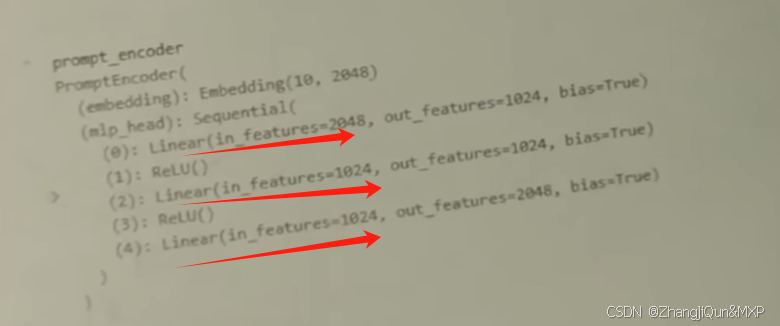
Prompt Tuning、P-Tuning、Prefix Tuning的区别
一、Prompt Tuning、P-Tuning、Prefix Tuning的区别 1. Prompt Tuning(提示调优) 核心思想:固定预训练模型参数,仅学习额外的连续提示向量(通常是嵌入层的一部分)。实现方式:在输入文本前添加可训练的连续向量(软提示),模型只更新这些提示参数。优势:参数量少(仅提…...
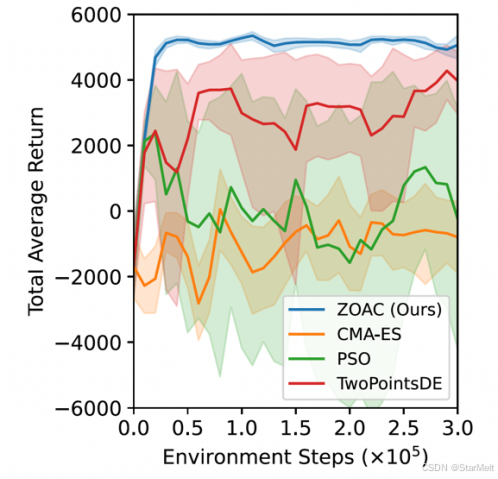
突破不可导策略的训练难题:零阶优化与强化学习的深度嵌合
强化学习(Reinforcement Learning, RL)是工业领域智能控制的重要方法。它的基本原理是将最优控制问题建模为马尔可夫决策过程,然后使用强化学习的Actor-Critic机制(中文译作“知行互动”机制),逐步迭代求解…...
使用rpicam-app通过网络流式传输视频)
树莓派超全系列教程文档--(62)使用rpicam-app通过网络流式传输视频
使用rpicam-app通过网络流式传输视频 使用 rpicam-app 通过网络流式传输视频UDPTCPRTSPlibavGStreamerRTPlibcamerasrc GStreamer 元素 文章来源: http://raspberry.dns8844.cn/documentation 原文网址 使用 rpicam-app 通过网络流式传输视频 本节介绍来自 rpica…...
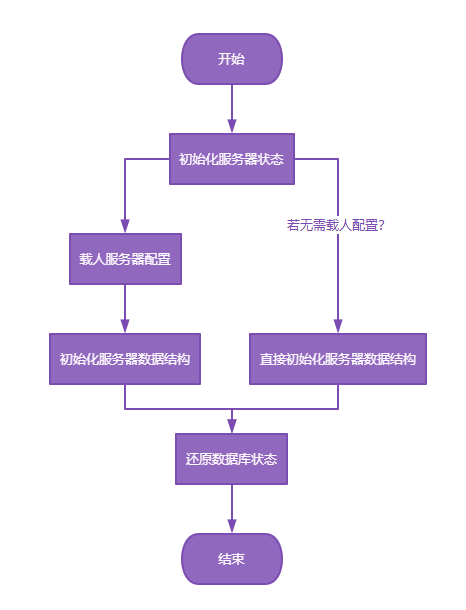
【Redis技术进阶之路】「原理分析系列开篇」分析客户端和服务端网络诵信交互实现(服务端执行命令请求的过程 - 初始化服务器)
服务端执行命令请求的过程 【专栏简介】【技术大纲】【专栏目标】【目标人群】1. Redis爱好者与社区成员2. 后端开发和系统架构师3. 计算机专业的本科生及研究生 初始化服务器1. 初始化服务器状态结构初始化RedisServer变量 2. 加载相关系统配置和用户配置参数定制化配置参数案…...

MODBUS TCP转CANopen 技术赋能高效协同作业
在现代工业自动化领域,MODBUS TCP和CANopen两种通讯协议因其稳定性和高效性被广泛应用于各种设备和系统中。而随着科技的不断进步,这两种通讯协议也正在被逐步融合,形成了一种新型的通讯方式——开疆智能MODBUS TCP转CANopen网关KJ-TCPC-CANP…...

Psychopy音频的使用
Psychopy音频的使用 本文主要解决以下问题: 指定音频引擎与设备;播放音频文件 本文所使用的环境: Python3.10 numpy2.2.6 psychopy2025.1.1 psychtoolbox3.0.19.14 一、音频配置 Psychopy文档链接为Sound - for audio playback — Psy…...

【学习笔记】深入理解Java虚拟机学习笔记——第4章 虚拟机性能监控,故障处理工具
第2章 虚拟机性能监控,故障处理工具 4.1 概述 略 4.2 基础故障处理工具 4.2.1 jps:虚拟机进程状况工具 命令:jps [options] [hostid] 功能:本地虚拟机进程显示进程ID(与ps相同),可同时显示主类&#x…...

Python 包管理器 uv 介绍
Python 包管理器 uv 全面介绍 uv 是由 Astral(热门工具 Ruff 的开发者)推出的下一代高性能 Python 包管理器和构建工具,用 Rust 编写。它旨在解决传统工具(如 pip、virtualenv、pip-tools)的性能瓶颈,同时…...

【生成模型】视频生成论文调研
工作清单 上游应用方向:控制、速度、时长、高动态、多主体驱动 类型工作基础模型WAN / WAN-VACE / HunyuanVideo控制条件轨迹控制ATI~镜头控制ReCamMaster~多主体驱动Phantom~音频驱动Let Them Talk: Audio-Driven Multi-Person Conversational Video Generation速…...
